One of the most interesting and exciting trends in modern construction is the implementation of passive energy design in the construction of all kinds of buildings, including residential, commercial, governmental, and other structures. From a new massive housing project in Canada to an off-the-grid “Solar Earthship” in rural Colorado, passive home design is quickly becoming the go-to concept for architects and builders throughout North America, and indeed the world.
Introducing Passive Home Design
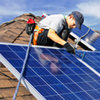 First, let’s take a closer look at what passive home design really involves. The core of a passive home design is solar energy. In the case of structures that are built from the ground up, the design of the structure is inherently and intentionally planned to reduce the heating and cooling loads that the building must carry, and then meet those needs either in whole or in part with energy derived from solar panels. Homes can also often be remodeled to take advantage of passive energy benefits, starting with a home energy audit to identify the most logical improvements.
First, let’s take a closer look at what passive home design really involves. The core of a passive home design is solar energy. In the case of structures that are built from the ground up, the design of the structure is inherently and intentionally planned to reduce the heating and cooling loads that the building must carry, and then meet those needs either in whole or in part with energy derived from solar panels. Homes can also often be remodeled to take advantage of passive energy benefits, starting with a home energy audit to identify the most logical improvements.
Choosing the Right Build Site
Because of the unique nature of solar energy, the positioning of a passive structure is critical. Most importantly, the south side of the structure needs to have unobstructed access to the sun. Obstructions can also be generated over time, as new buildings are built in a neighborhood or community, or small trees grow into big trees. The windows that collect solar energy need access to the sun during the majority of daylight hours during the heating season, and should be shaded during cooling seasons to prevent overheating the home.
 Essentially, passive home design works because the home or building collects heat as the sun shines through the south-facing windows and retains it in building materials that store heat, known to designers as thermal mass. The materials that serve as a passive home’s thermal mass often include common building materials such as concrete, brick, stone, and tile, but can also include more unusual materials such as water. This heat is then distributed to different areas via different methods, including conduction, convection, and radiation.
Essentially, passive home design works because the home or building collects heat as the sun shines through the south-facing windows and retains it in building materials that store heat, known to designers as thermal mass. The materials that serve as a passive home’s thermal mass often include common building materials such as concrete, brick, stone, and tile, but can also include more unusual materials such as water. This heat is then distributed to different areas via different methods, including conduction, convection, and radiation.
Passive House Principles
 It’s important to understand the fundamental principles behind passive home design before embarking on a project. The Passive House Alliance U.S. is a good place to start both to delve deeper into passive home design and to help identify architects, designers, engineers, and construction professionals who understand and have experience with this unique concept.
It’s important to understand the fundamental principles behind passive home design before embarking on a project. The Passive House Alliance U.S. is a good place to start both to delve deeper into passive home design and to help identify architects, designers, engineers, and construction professionals who understand and have experience with this unique concept.
Getting to the level of energy efficiency exercised by passive home design can be a challenge. Maximizing gains in energy while minimizing the loss of energy isn’t necessarily a natural function of most homes. To that end, passive energy projects utilize very specific principles of design, including:
- installing high-tech insulation throughout the entirety of the home;
- making the building envelope airtight. Because the home is sealed most of the time, condensation and mold risks are reduced, but passive home owners can still open their doors and windows just as they would in a “traditional” home;
- employing high-performance windows with low emissivity window glazing to minimize energy loss and maximize energy gain;
- installing smart distribution mechanisms to collect and store solar energy, which may include items like sun-heated floors, heat transfer via air or water, and the use of different color palettes to absorb or reflect heat at different places in the home; and,
- maximizing solar energy during the heating season and minimizing heat gain during the cooling season.
Examples of Smart Passive Energy Buildings
As builders continue to embrace passive energy design and net zero concepts, the number of passive design builds in North America and Europe continue to diversify.
In recent years, Canada has joined the Smart City movement in the goal of eliminating greenhouse gas emissions by 2030. To that end, a massive passive home project is underway in Vancouver, with the goal of creating a six-story mixed-use building that combines street-level retail with 85 units of rental housing.
The project is called The Heights, and when complete will be one of the largest passive energy projects in North America, and the largest in Canada. The project uses a simple single envelope design to retain and distribute heat, meaning that each unit can be heated using a simple electric baseboard heater running on just 300 watts.
 Another interesting passive home project is nestled in the San Juan Mountains in southeastern Colorado, where the so-called “Solar Earthship,” is not only energy efficient but net positive, meaning it creates its own energy. In addition to implementing the passive energy principles detailed above, the home’s walls are nearly 100% thermal mass, having been constructed from 2,000 recycled tires packed with dirt, then covered with adobe.
Another interesting passive home project is nestled in the San Juan Mountains in southeastern Colorado, where the so-called “Solar Earthship,” is not only energy efficient but net positive, meaning it creates its own energy. In addition to implementing the passive energy principles detailed above, the home’s walls are nearly 100% thermal mass, having been constructed from 2,000 recycled tires packed with dirt, then covered with adobe.
Some inspired homeowners sometimes even retrofit their homes to fit the passive energy home design concept. From Quonset huts to antique farm homes, almost any structure can be assessed, reconfigured, and redesigned to take advantage of solar energy and passive home ideas, although introducing recycled materials into an existing structure may take more time and cost. Passive energy design has also been utilized in all kinds of non-residential structures including schools, office buildings, and even public swimming pools in order to better capture and utilize solar energy.
The Benefits of Passive Energy Design
 Passive energy buildings offer their occupants tremendous short-term and long-term benefits, not only in cost but also in comfort. Passive homes in general cost five to 10 percent more to build than traditional homes, but the long-term savings in energy costs more than offsets that investment. It’s worth keeping in mind that federal, state, or community tax credits or other tangible benefits may apply to your passive home project.
Passive energy buildings offer their occupants tremendous short-term and long-term benefits, not only in cost but also in comfort. Passive homes in general cost five to 10 percent more to build than traditional homes, but the long-term savings in energy costs more than offsets that investment. It’s worth keeping in mind that federal, state, or community tax credits or other tangible benefits may apply to your passive home project.
Regardless, the incredible efficiency of passive home design provides homeowners and occupants with unmatched comfort, excellent indoor air quality, extremely resilient construction, and the best opportunity to reach net zero and net positive energy standards.
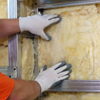 Home energy audits can be performed by your electric company or by a professional energy auditor. During your home checkup, the auditor will inspect your attic’s insulation, furnace and duct work, as well as look for any leaks. A blower door test and infrared camera might also be used to establish any areas where the home has an unintentional air passageway. After the audit, the auditor will be able to determine where your house could be more efficient and what can be corrected to help you save energy and money.
Home energy audits can be performed by your electric company or by a professional energy auditor. During your home checkup, the auditor will inspect your attic’s insulation, furnace and duct work, as well as look for any leaks. A blower door test and infrared camera might also be used to establish any areas where the home has an unintentional air passageway. After the audit, the auditor will be able to determine where your house could be more efficient and what can be corrected to help you save energy and money. After the energy audit, you will be more aware of where the majority of your energy consumption is going and how to make any necessary changes to be more efficient. These proposed changes are simply recommendations made by the auditor, and are not required. However, by making the suggested efficiency upgrades, you could save 5 to 30 percent on your monthly energy bill.
After the energy audit, you will be more aware of where the majority of your energy consumption is going and how to make any necessary changes to be more efficient. These proposed changes are simply recommendations made by the auditor, and are not required. However, by making the suggested efficiency upgrades, you could save 5 to 30 percent on your monthly energy bill. If your energy company does not offer an energy auditing service or you do not want to pay for a professional, you can perform an energy assessment on your own. You can check for air leaks caused by gaps around windows, doors, lighting fixtures, and electrical outlets, in addition to inspecting the insulation in your attic. A home energy assessment is just the beginning of your energy savings journey, and whether performed by a professional or done by yourself, it can help you be more conscious of where the majority of your energy is being consumed.
If your energy company does not offer an energy auditing service or you do not want to pay for a professional, you can perform an energy assessment on your own. You can check for air leaks caused by gaps around windows, doors, lighting fixtures, and electrical outlets, in addition to inspecting the insulation in your attic. A home energy assessment is just the beginning of your energy savings journey, and whether performed by a professional or done by yourself, it can help you be more conscious of where the majority of your energy is being consumed.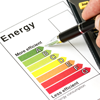 So the next time you get your electric bill, take a look at your total energy consumption for the month. Consider contacting your electric company to see if an energy audit service is offered, and to identify how efficiently or inefficiently your home’s energy is being used.
So the next time you get your electric bill, take a look at your total energy consumption for the month. Consider contacting your electric company to see if an energy audit service is offered, and to identify how efficiently or inefficiently your home’s energy is being used.


 A home’s orientation is important for those shopping for a home or piece of land to purchase. At this point, it’s easy to consider the direction the house faces. You still have the option to either keep shopping or have a home custom built.
A home’s orientation is important for those shopping for a home or piece of land to purchase. At this point, it’s easy to consider the direction the house faces. You still have the option to either keep shopping or have a home custom built. The concept of positioning your home toward the sun to save on heating and cooling costs is called passive solar energy. Depending on where the sun is in relation to your home’s windows, it may help heat up your living space while keeping unused areas cool. The catch: there’s a lot to consider when setting up your home for effective passive solar energy.
The concept of positioning your home toward the sun to save on heating and cooling costs is called passive solar energy. Depending on where the sun is in relation to your home’s windows, it may help heat up your living space while keeping unused areas cool. The catch: there’s a lot to consider when setting up your home for effective passive solar energy. Your energy bills are mostly impacted by the cost of heating and cooling your home. By carefully positioning the direction your home faces, as well as enhancing certain features, you can take full advantage of free solar energy. Not only does your home become more cost-efficient, but you may also create a better view, increase curb appeal and raise the resale value of your home.
Your energy bills are mostly impacted by the cost of heating and cooling your home. By carefully positioning the direction your home faces, as well as enhancing certain features, you can take full advantage of free solar energy. Not only does your home become more cost-efficient, but you may also create a better view, increase curb appeal and raise the resale value of your home.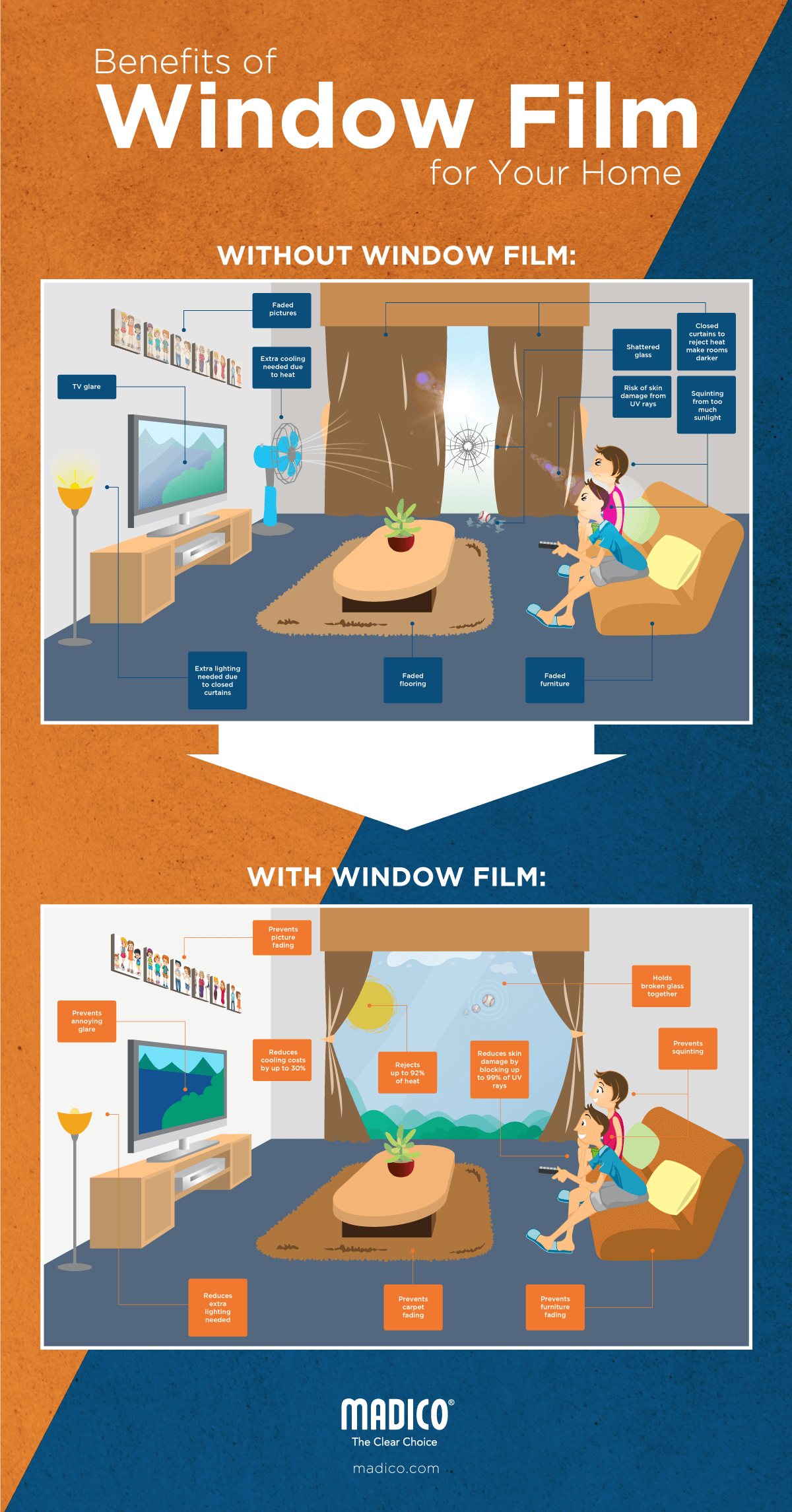
 A zero net energy building must produce as much or more energy than it needs to maintain. This entails a renewable energy system and various energy efficiency measures that will offset the home’s annual energy consumption.
A zero net energy building must produce as much or more energy than it needs to maintain. This entails a renewable energy system and various energy efficiency measures that will offset the home’s annual energy consumption. Taking small steps and implementing a few energy-saving tactics at a time is perhaps a smart way to go about it, especially if you’re working with an older home.
Taking small steps and implementing a few energy-saving tactics at a time is perhaps a smart way to go about it, especially if you’re working with an older home. 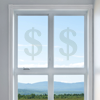 The Fishers started with insulating the attic and then quickly moved on to their windows. Living in a hurricane-risk state, these Floridians opted for Energy Star certified double-paned windows. Of course, they didn’t stop there. To make their windows more efficient, they
The Fishers started with insulating the attic and then quickly moved on to their windows. Living in a hurricane-risk state, these Floridians opted for Energy Star certified double-paned windows. Of course, they didn’t stop there. To make their windows more efficient, they  Installing solar panels may be the most complicated energy-saving tactic, but it also has the largest payoff. If you’re ready to take on the project, there are a few terms to learn before you get started:
Installing solar panels may be the most complicated energy-saving tactic, but it also has the largest payoff. If you’re ready to take on the project, there are a few terms to learn before you get started: The top two factors to think about before diving deeper into solar power are 1) the climate in which you live, and 2) whether or not you have open and direct access to sunlight during the peak hours of the day (10 a.m. – 2 p.m.).
The top two factors to think about before diving deeper into solar power are 1) the climate in which you live, and 2) whether or not you have open and direct access to sunlight during the peak hours of the day (10 a.m. – 2 p.m.). Ideally, you’d power your entire home with solar-sourced energy. However, easing into it with smaller projects can still offer big benefits. From the simplest installation to the most complex, here’s where you can use solar panels around your home:
Ideally, you’d power your entire home with solar-sourced energy. However, easing into it with smaller projects can still offer big benefits. From the simplest installation to the most complex, here’s where you can use solar panels around your home: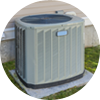 There are several types of air conditioners, with the most common being room cooling systems and central AC units.
There are several types of air conditioners, with the most common being room cooling systems and central AC units.  To ensure that your air conditioning unit is working as efficiently and effectively as possible, routinely change your air filters. The air filter is a component in cooling systems that needs to be changed frequently. Hair, pet fur, dust, dirt, leaves, and any other debris can leave you with a dirty and clogged filter. How frequently you change your air filter depends on several factors including pets and allergies. Typically filters can be changed every other month; however with pets and/or allergies, your
To ensure that your air conditioning unit is working as efficiently and effectively as possible, routinely change your air filters. The air filter is a component in cooling systems that needs to be changed frequently. Hair, pet fur, dust, dirt, leaves, and any other debris can leave you with a dirty and clogged filter. How frequently you change your air filter depends on several factors including pets and allergies. Typically filters can be changed every other month; however with pets and/or allergies, your  An annual air conditioning technician will check to make sure everything within the unit is running properly.
An annual air conditioning technician will check to make sure everything within the unit is running properly.  Draining and cleaning your water heater every six months will make the system run more efficiently. It also avoids the chance of the bottom of your water heater rusting from sedimentation buildup. Debris can clog pipes and pollute your clean water, disrupting the water flow and costing you more money.
Draining and cleaning your water heater every six months will make the system run more efficiently. It also avoids the chance of the bottom of your water heater rusting from sedimentation buildup. Debris can clog pipes and pollute your clean water, disrupting the water flow and costing you more money.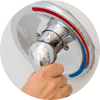 Between showering, washing your hands, and running the dishwasher or washing machine, you use a large portion of hot water, driving up your water heating bills every year. According to Home Water Works, dishwashers use up to
Between showering, washing your hands, and running the dishwasher or washing machine, you use a large portion of hot water, driving up your water heating bills every year. According to Home Water Works, dishwashers use up to  Lowering the temperature of your water heater to 120⁰ Fahrenheit can reduce costs dramatically. You can cut energy costs by as much as
Lowering the temperature of your water heater to 120⁰ Fahrenheit can reduce costs dramatically. You can cut energy costs by as much as 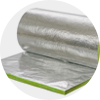 If you have an older water heater, chances are it is not insulated. Having an insulated water heater will reduce its standby heat loss by as much as 45% and can save you anywhere from
If you have an older water heater, chances are it is not insulated. Having an insulated water heater will reduce its standby heat loss by as much as 45% and can save you anywhere from  Approximately
Approximately 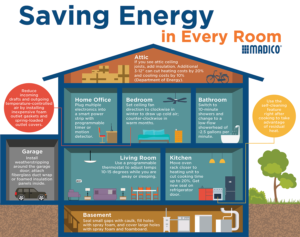
 First, let’s take a closer look at what passive home design really involves. The core of a passive home design is solar energy. In the case of structures that are built from the ground up, the design of the structure is inherently and intentionally planned to reduce the heating and cooling loads that the building must carry, and then meet those needs either in whole or in part with energy derived from solar panels. Homes can also often be remodeled to take advantage of passive energy benefits, starting with a
First, let’s take a closer look at what passive home design really involves. The core of a passive home design is solar energy. In the case of structures that are built from the ground up, the design of the structure is inherently and intentionally planned to reduce the heating and cooling loads that the building must carry, and then meet those needs either in whole or in part with energy derived from solar panels. Homes can also often be remodeled to take advantage of passive energy benefits, starting with a  Essentially, passive home design works because the home or building collects heat as the sun shines through the south-facing windows and retains it in building materials that store heat, known to designers as thermal mass. The materials that serve as a passive home’s thermal mass often include common building materials such as concrete, brick, stone, and tile, but can also include more unusual materials such as water. This heat is then distributed to different areas via different methods, including conduction, convection, and radiation.
Essentially, passive home design works because the home or building collects heat as the sun shines through the south-facing windows and retains it in building materials that store heat, known to designers as thermal mass. The materials that serve as a passive home’s thermal mass often include common building materials such as concrete, brick, stone, and tile, but can also include more unusual materials such as water. This heat is then distributed to different areas via different methods, including conduction, convection, and radiation. It’s important to understand the fundamental principles behind passive home design before embarking on a project.
It’s important to understand the fundamental principles behind passive home design before embarking on a project.  Another interesting passive home project is nestled in the San Juan Mountains in southeastern Colorado, where the so-called
Another interesting passive home project is nestled in the San Juan Mountains in southeastern Colorado, where the so-called  Passive energy buildings offer their occupants tremendous short-term and long-term benefits, not only in cost but also in comfort. Passive homes in general cost five to 10 percent more to build than traditional homes, but the long-term savings in energy costs more than offsets that investment. It’s worth keeping in mind that federal, state, or community tax credits or other tangible benefits may apply to your passive home project.
Passive energy buildings offer their occupants tremendous short-term and long-term benefits, not only in cost but also in comfort. Passive homes in general cost five to 10 percent more to build than traditional homes, but the long-term savings in energy costs more than offsets that investment. It’s worth keeping in mind that federal, state, or community tax credits or other tangible benefits may apply to your passive home project.